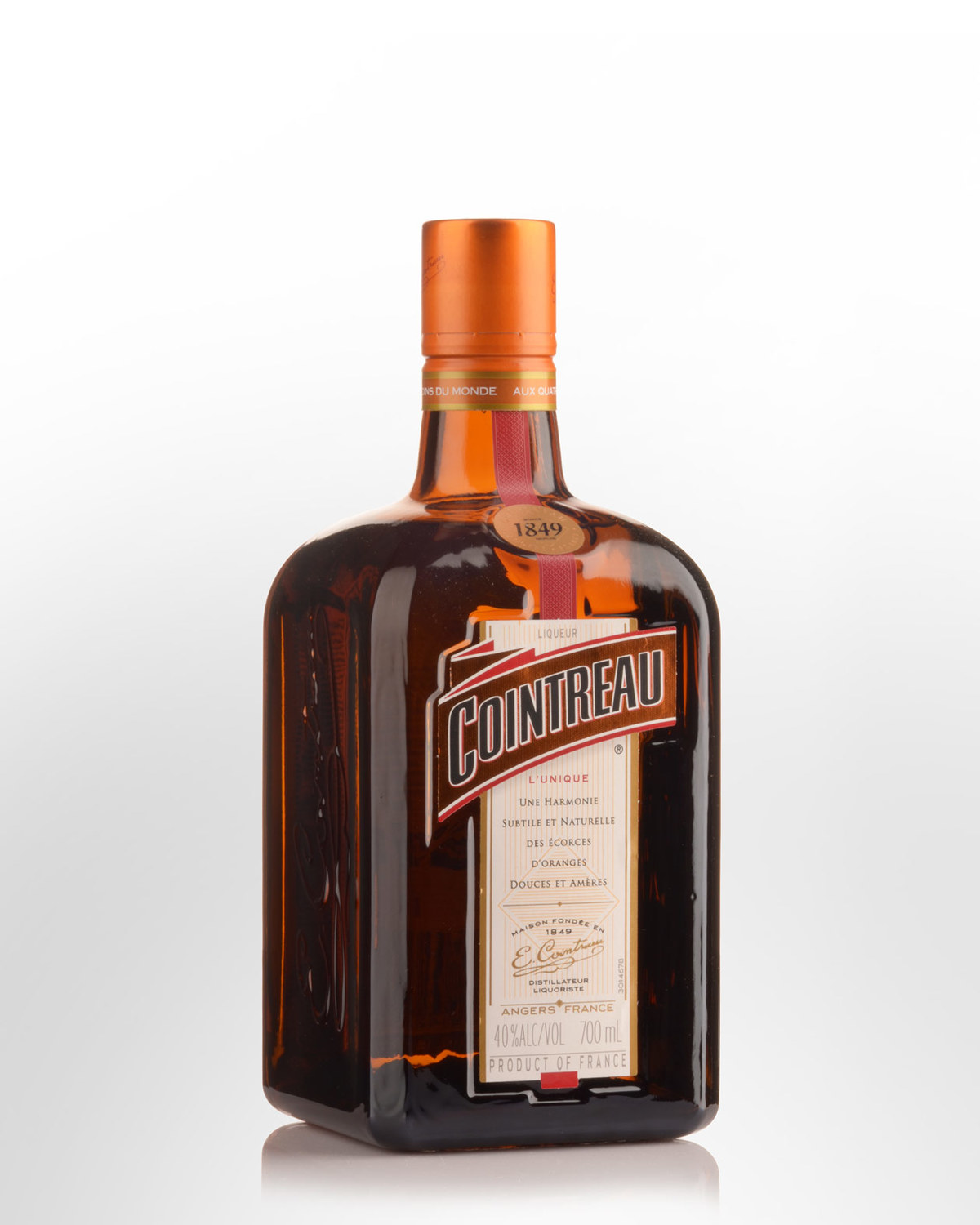
- 96
- Packaging may vary
Cointreau Triple Sec Liqueur (700ml)
Towards the middle of the 1800's, Edouard Cointreau's son, Edouard fils, discovered a species of wild orange native to the Caribbean. Knowing the fruit could not survive the long ocean voyage back to France, Edouard had a quantity of the oranges peeled and the peel dried and sent on to France. On its arrival, the unusual scent of the peel stirred the imagination of Edouard's father (oranges were not available in Europe at the time) and he began experimenting. He steeped the peel in brandies and through distillation combined the infusion with various local herbs and spices. The final result was an outstanding balance of aromas and flavours with a pleasant tart character.
Now world famous, Cointreau orange liqueur is fantastically versatile. Not only is it amongst the most favoured liqueurs of the world, it is also a vital element in many important cocktails. Oranges used in Cointreau's production are now sourced from several centres: In the Caribbean, the bitter Bigarade (citrus aurentium) is harvested when the orange is still unripe - when it has the greatest aroma. Every process is rigorously controlled - from the separation of the peel from the pulp by hand, to drying in the sun until they turn bronze-green, followed by careful sorting. Peels are similarly processed from sweet Comuna, Cadanera and Salustiana oranges from Spain, and the Pera with its rich essential oils from Brazil. Some of these sweet peels are also used fresh.The peels are shipped to the Cointreau distillery in Angers and inspected again. The fresh, sweet peels are macerated in alcohol for several weeks to bring out the essential aromas.
Distillation takes place in steam heated copper stills which are filled with orange peels, alcohol and water. By precisely fixing the speed of the distillation, the heating temperature and the leveling out of the alcohol, Cointreau's distillers are able to isolate the richest aromas from the 'heart' of the distillation, seperating them from the less valuable 'heads' and 'ends'. A new distillation of the heads and ends follows in order to extract every rich component. These essences are concentrated to retain only the most aromatic elements.
Cointreau's alcoholic content, (40% alcohol by volume), its density, its absolute clarity at room temperature, as well as the temperature at which the liquid becomes opaque are monitored. When cooled, or when poured over ice, Cointreau turns opalescent. This transformation confirms that the correct quantity of essential oils has been achieved. The oils have a solubility directly linked to the alcoholic strength and temperature. On cooling, the oils become insoluble and make the liquid opalescent. Achieving this is a production secret of Cointreau.
Tasting note: Clear, bright silvery appearance is slightly glycerous. Aroma is super pure and perfumed with high pitch orange zest, pith and peel bursting with freshness. The palate is silky, creamy, nicely spiced and a little sweeter than the nose suggests with candied orange dovetailing into fresher, drier pith and peel notes. Gentle spices persisting. Excellent length. Long aftertaste of orange zest with a candied orange fade. Classic and certainly unsurpassed for aromatics in the genre. 40% Alc./Vol.
Other reviews... A sophisticated orange pulp bouquet which after aeration turns much more dry peel-like. The palate entry is intensely orange peel-like yet more sweet than bittersweet; the midpalate stage is deeply orangey, sweet and sublimely juicy. Finishes ideally citrusy/tart/astringent, then turns lithe and sweet. The benchmark for all orange flavored liqueurs/triple secs. State of the art. Rating: 96-100 - www.wineenthusiast.comsize>
Classic Cocktail: The Margarita
The Margarita has suffered terribly in modern times. In an effort to make it hip, quick, trendy, and cheap it has been bastardized far worse then any cocktail before it. Whether it is the use of inferior (or just plain wrong) ingredients, or commercially made mixes, the common Margarita these days tastes more like a ‘Limeade’ with a splash of orange juice than it does the delectable cocktail that it once was. A true Margarita is made from three ingredients: Tequila, Cointreau (Triple Sec), and fresh squeezed Lime Juice. Like any cocktail, the true art comes in arriving at the proper ratio of the ingredients in order to present a balance of the flavours. Arguably the best ratio for a Margarita is 3:2:1. Three parts Tequila, 2 parts Cointreau, and 1 part freshly squeezed lime juice.
60ml Tequila - preferably a Silver Tequila
40ml Cointreau or other Triple Sec Liqueur
20ml Lime Juice
Method: Shake with ice. Strain into a cocktail glass. Optional: You can prepare the cocktail glasss by miostening the rim with lime juice, and then dipping it into coarse salt.
- notes partially sourced from www.drinkboy.com
to most of Australia
